Consciousness, Stress and Formatting
Abstract: Richard Utt, in Applied Physiology, developed the notion of formatting. In Neuroenergetic Kinesiology, I have developed these concepts further. Formatting accesses stress states by taking an energetic stress picture using acupoints and finger modes. I will also explain a theory of consciousness, this is a model that explains not only the Eastern transpersonal view, but also fits in with current knowledge of neurology and Western science.
Part 1: The Treatment Triangle
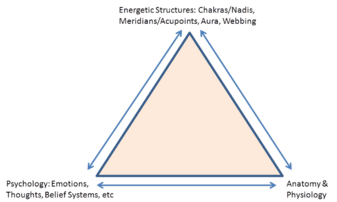
To understand formatting better, I have developed a model of formatting and the treatment triangle. This model states that formatting captures an energetic imprint of stress on a particular structure. The treatment triangle enables the practitioner to access and balance the stress very precisely.
Every psychological imbalance has a physical imbalance. The psychological imbalances can appear as temporary mental/emotional imbalances or as more chronic mental disorders. An example of the range of imbalance is from feeling sad or lonely, to having a full blown panic disorder. These extremes, in fact, have the same underlying neurology. They are just different degrees of innervation.
The physical imbalances associated with both psychological disorders are in the anatomy and physiology. Every psychological disorder, whether it is a temporary feeling or a chronic condition, has a neurological imbalance. This manifests in the neurotransmitters and the endocrine system. There is also an imbalance in the Chakra system that accompanies this. The Chakras, in fact, are where the imbalance is held.
For me, in Kinesiology what we do is remove stress. This allows clients to adjust and deal with the stressor and heal themselves. This raises the question, “How exactly do we remove the stress?” Well, the first step is to access the stress.
“How is this done?” There are many ways of doing this, and some of them require the practitioner to have a high degree of expertise and personal development.
Part 2: Formatting
Richard Utt, in Applied Physiology, developed a major breakthrough for the Kinesiologist called ‘Formatting’. This has turned out to be, for me, the greatest gift that Kinesiology has to offer, because it allows the practitioner, no matter how well they are trained, to access the stress on a particular piece of anatomy or physiology. It also allows the practitioner to assess just exactly where the stress is held in the Chakra system.
Formatting uses a combination of acu-points and finger modes. This draws on the Chinese tradition of Acupressure and the Meridian system, and on the Indian tradition of Finger Modes that are derived from mudras. Using a combination of these, the energetic stress pattern of any anatomy and physiology can be accessed
If music is an analogy, then the finger modes and acupoints are notes and the format is a chord.

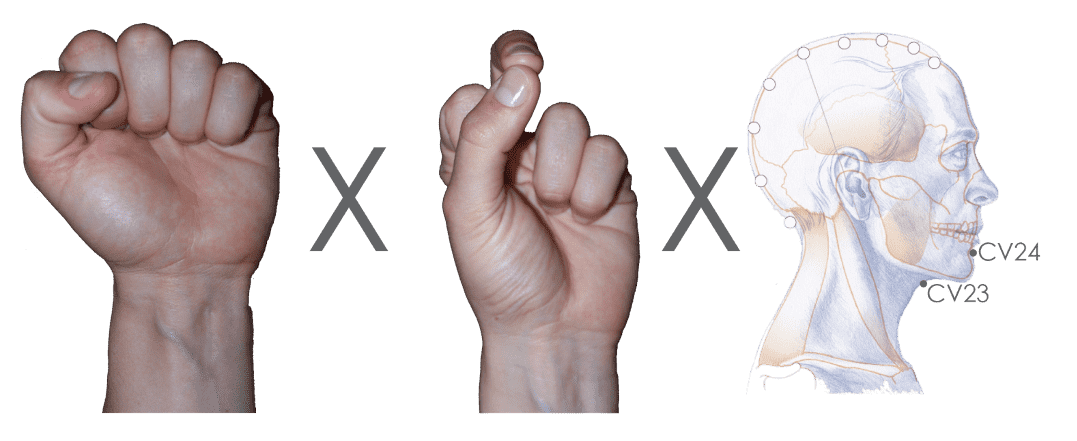
The origin of consciousness in the East and West
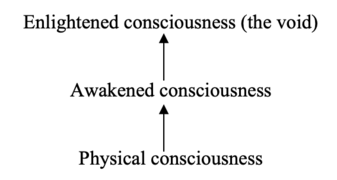
or a UNIFIED THEORY OF CONSCIOUSNESS.
Consciousness can be looked at in many ways. It is the foundation of our existence. It makes us who we are and who we think we are. We can consider consciousness from our every day waking perspective. It is “our” experience from when we wake up to when we go to sleep. There is also consciousness when we are asleep. Indeed we have the dreaming sleep state and the deep sleep state.
There is also expanded consciousness, the consciousness of meditation, spiritual ecstasy of prayer – that which “uplifts the soul”. There is also the state of “oneness” or the void of Wolinksy. This is samadhi, the deep state of meditation. All of these could be considered as a form of consciousness. So what is the mechanism of this? Do we consider it as purely a function of neurology? What about all of the Eastern views of it?
What I propose is a model that explains not only the Eastern transpersonal view, but also fits in with current knowledge of Western science. Firstly lets look at waking consciousness. It is known that lesions in the brainstem reticular formation or in the intralaminar nuclei of the thalamus are enough to cause an irreversible coma.
If we look at the spiritual aspects of consciousness we have “physical” consciousness “awakened” consciousness and “enlightened” consciousness.
What is important is that there is no clear lines between each state. One state should lead to the next. In the search for the mechanism in the nervous system, it leads us to some very interesting places. The thalamus seems to be the key for this.
The above diagram is about the expansion of consciousness. Wolinksy talks about the contraction of the “void of indifferentiated consciousness” to form the “I am”. He also refers to the expansion of it. The “I am” is the contraction of the “void of indifferentiated consciousness”. Wolinsky in The Way of the Human Part III explains it with a diagram as such:
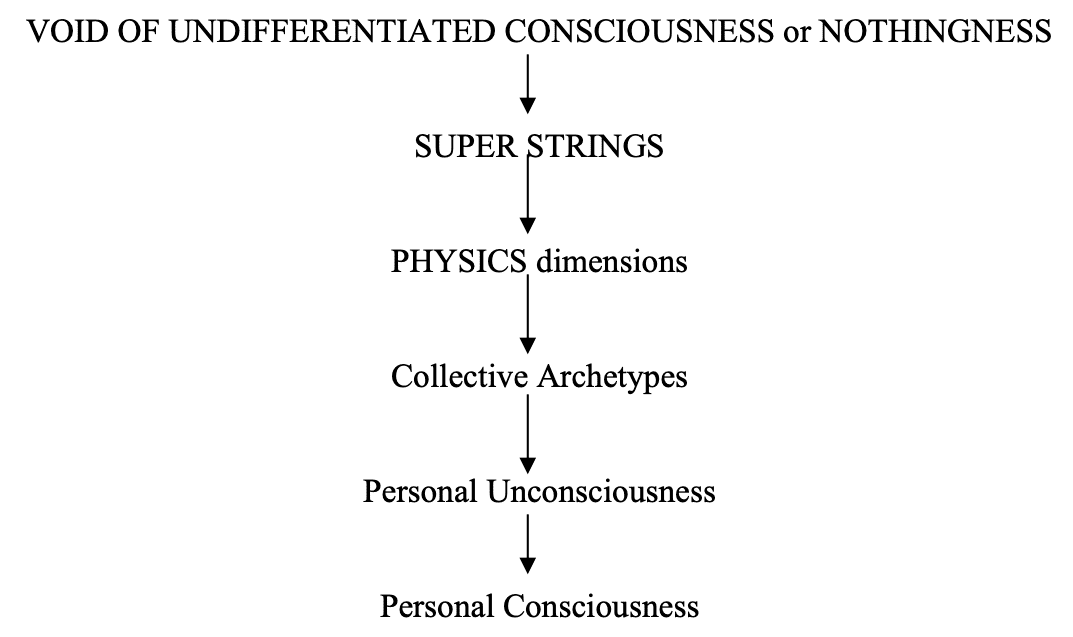
String Theory
Strings comes from super string theory which says all matter known or unknown is made up of vibrations. These vibrations can be visualised as vibrating strings, hence super strings. So according to Wolinsky the void contracts to vibrations which contracts to the physical universe which contracts into archetypes which then contracts into the personal unconsciousness and then the personal consciousness.
Next we need to look at the neural mechanisms of these. The physical consciousness is made up of the 3 parts, which are analogous to the three states of waking, dreaming sleep (REM sleep), and deep sleep (slow wave sleep or NREM sleep).
- Personal consciousness relates to WAKING
- Personal unconsciousness relates to REM
- Collective archetypes relates to NREM
For personal consciousness to exist we need structures such as the hippocampus. Without the hippocampus we cannot bind one waking experience to the next.
I find Wolinksy’s concepts of the physics dimensions very interesting. Looking at this from a purely physical dimension, we understand the concepts of forces, such as gravity, electromagnetism, acceleration etc. These are forces that shape our physical world. In fact these forces bind our world, right down to the quantum level, where quantum forces keeps atoms together.
So Wolinsky’s “physics dimension” (which I call the universe) si shaped by forces both known and unknown. These unknown forces are very interesting. In physics they refer to them as being from other dimensions. To me, the comparisons of Wolinsky’s work and that of theosophy as striking similarities can be found. They refer to the physics dimension to that of the atmic plane. Alice Bailey refers to the forces of Astrology as being from the atmic. While they certainly are, there are more than just the astrological influences. The forces which are a contraction of vibration then can shape us on the buddhic plane, which in theosophy is the intuitional plane. According to Wolinsky it is the realm of archetypes. It is these archetypes that make up who we are. Wolinsky has very interesting ideas on this, and in fact it is these archetypes that shape our thoughts, emotions and actions. All of who we think we are exists through archetypes.
Archetypes are symbols, if we have forces of the universe (atmic plane) working through these symbols of the buddhic (archetypes). Then this is called an “imprint of consciousness” by some commentators. Harish Johari refers to Yantra as an “imprint of consciousness”. This is in fact a principal of radionics, where you can use a known physical force through a symbol to make a radionic “imprint”. While it is nice to say this is an “imprint of consciousness” I would prefer to call it an “imprint of psychology”. For as these archetypes exist on the buddhic dimension of intuition. It is from here that the "imprint of psychology” can effect our mental and emotional realms or the “personal unconsciousness” and “personal consciousness” as expounded by Wolinsky. The mechanism of the three states that relate to the “personal consciousness” the “personal unconsciousness” and the “archetypal intuition” are well documented.
At this point I would prefer to rename the personal unconsciousness to the “personal unconscious psychology” and rename the “personal consciousness” to the “personal conscious psychology” or “personal psychology” for both. It is the expansion of awareness (which people often confuse with consciousness) beyond these realms lead to interesting new ideas.
For me my new theories first started after reading book called DMT – the spirit molecule by Rick Strassman. DMT is the endogenous hallucinogen produced in the pineal gland at times of expanded awareness like birth, death, sexual ecstasy and deep meditation. Strassman calls it the spirit molecule because it leads to expanded awareness. He conducted the only legal studies of DMT in the USA. The “problem” is that we have an active enzyme that breaks it down very quickly.
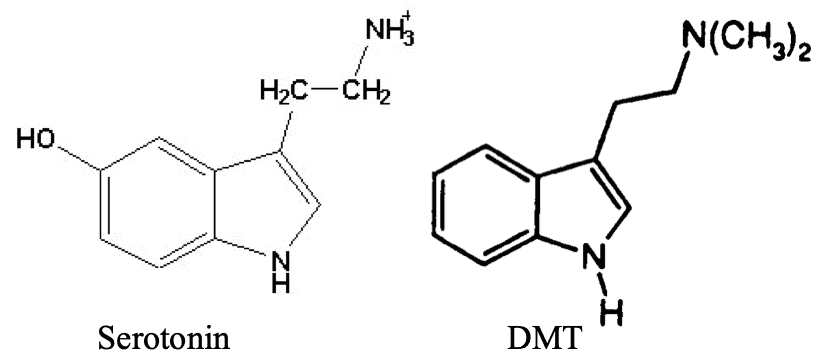
In South America the Native Americans of the Amazon have a drink called Ayahuasca. The active ingredient of this is DMT (Di Methyl Tryptamine). It also contains a chemical that stops the enzyme that breaks down DMT from working. The Shamans of South America use this drink to do their Shamanic Journeying.
DMT acts on certain receptors of a neurotransmitter called serotonin. Most hallucinogens act on these serotonin receptors (for example LSD does). So this meant that for me to understand this I had to study serotonin receptors. So then I cam across the perfect book called Serotonin Receptors and their Ligands by Oliver et al (eds). This is a book on the study of drug interactions with the different serotonin receptors.
Of particular interest to me became athe 5-HT4 serotonin receptor. This receptor does have DMT bind to it. These receptors are found in the caudate nucleus, globus pallidus, putamen, nucleus accumbens, ventral pallidum and the substantia nigra pars reticulata of the Basal Ganglia. All of these make up different parts of the Basal Ganglia. These receptors are also found in the Dentate Gyrus, CA1, CA3 and the entorhinal cortex of the hippocampal formation.
These receptors are also found in the frontal and parietal lobes of the cerebral cortex. The other areas that they are found is in the Intralaminar thalamic nuclei and the peripheral cholinergic neurons. These receptors are very interesting because they are thought to be involved with a form of long term plasticity in the brain. Or simply putting it, they can change the way the brain functions.
They are interesting because they are involved with long term inhibition of neurons not firing, which means they fire for a long time. This is more and more interesting when you consider that they are involved with cognition, learning, memory, emotional processes and reward. All that stuff that is completely tied up in our archetypical and personal psychological realms.
So if DMT is able to take our awareness beyond this and even take our awareness beyond the “physics dimension” maybe what it is doing it taking our awareness to the level of vibration. In meditation terms this is called “presamadhi”. This is an interesting theory when I tried my kinesiological techniques on Stephen Wolinksy, who experiences samadhi, he said it felt like a presamadhi. But Stephen pushed me further, he asked me “what about samadhi?” How does that interface with the nervous system? What an interesting concept. I had not thought about that.
Obviously the awareness of the person experiencing samadhi has to be act a high level. Though similar to the mechanisms of deep sleep but different. The mechanism of deep sleep that shuts down the cortex begins in the reticular nucleus of the thalamus. There is an intrinsic system that causes this within the nervous system.
I propose that awareness turns on the reticular nucleus of the thalamus which shuts down the thalamus and therefore the cortex. This simply is the mechanism of samadhi.

Kinesiology
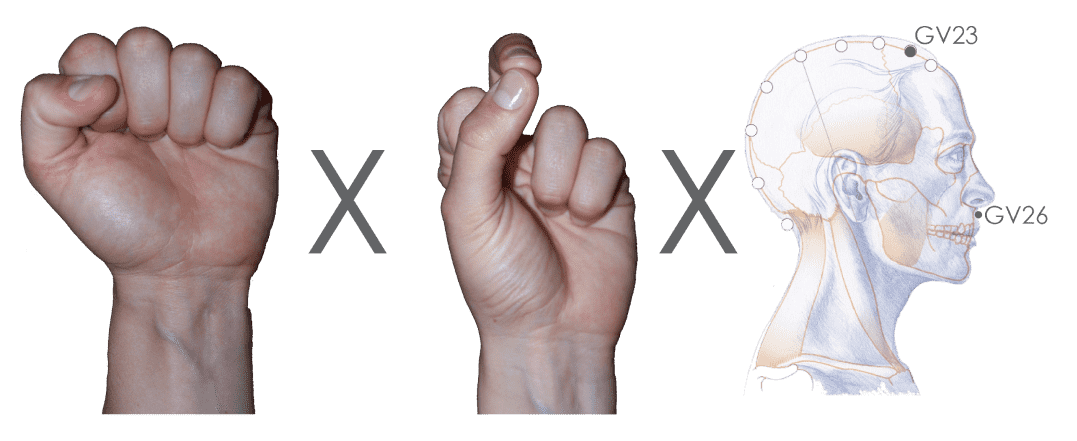
Procedure for balancing awareness
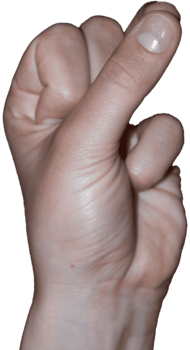
holding this mode deep touch,
then it is the mode
for neurotransmitter
- Test and correct Teres Major
- Pauselock Diencephalon Format Anatomy x Gland x GV26 x GV23
- Retest Teres Major
- Correct as necessary
- Pauselock Neuotransmitter mode.
- Temporal Tap “Dimethyl tryptamine”
- Retest Teres Major
- Correct as necessary
- Temporal Tap “5-HT4 Serotonin Receptor”
- Retest Teres Major
- Correct as necessary
